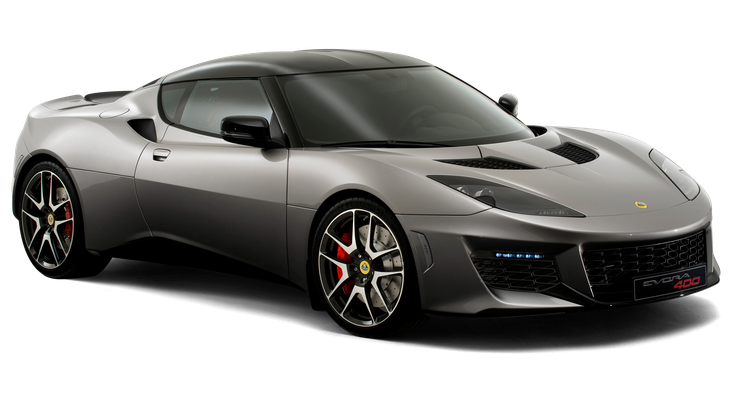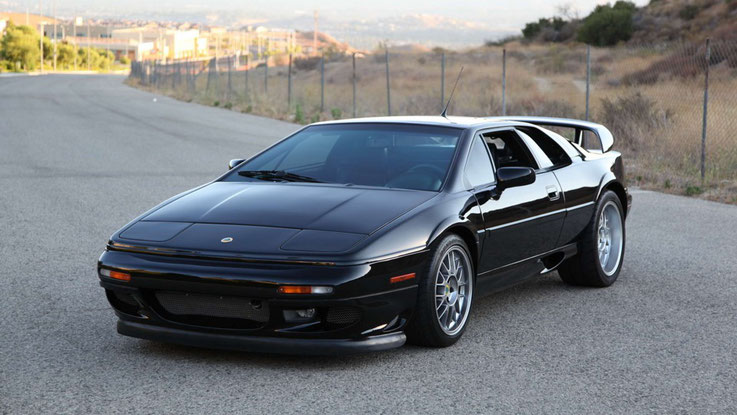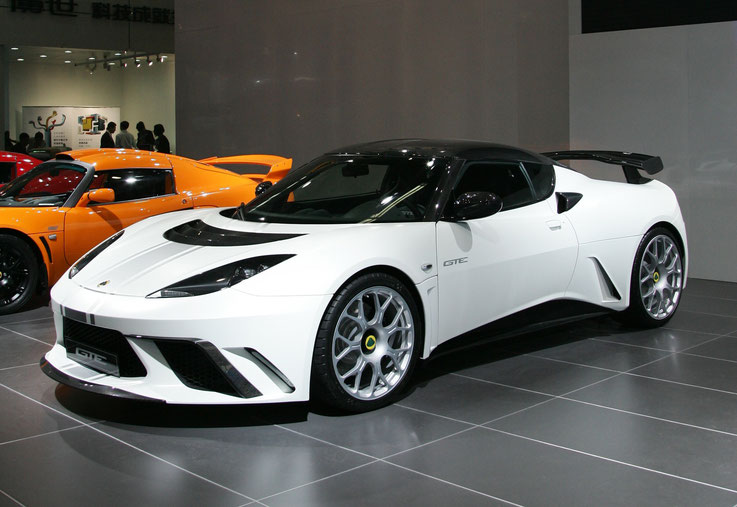- Acura
- Alfa Romeo
- Aston Martin
- Audi
- AUDI 80 Workshop Manual Free Download
- AUDI 80 Schematic wiring diagram
- Audi 100 Service Repair Manuals PDF
- Audi A2 Service Repair Manuals PDF
- Audi A3 Electrical Wiring Diagrams
- Audi A3 workshop manual free download
- Audi A3 Fault Codes list
- Audi A4 Service Repair Manuals PDF
- Audi A7 Service Repair Manuals PDF
- Audi A8 Service Repair Manuals PDF
- Austin
- Bentley
- BMW
- Brilliance
- Bugatti
- Buick
- BYD
- Cadillac
- Chana
- Changan
- Chery
- Chevrolet
- Chrysler
- Citroën
- Citroen Fault codes
- Citroen AX Service Repair Manuals PDF
- Citroen Berlingo Service Repair Manuals PDF
- Citroen BX Service Repair Manuals PDF
- Citroen C-Crosser Service Repair Manual PDF
- Citroen C-Elysée Service Repair Manuals PDF
- Citroen C-Zero Service Repair Manuals PDF
- Citroen C1 Service Repair Manuals PDF
- Citroen C2 Service Repair Manuals PDF
- Citroen C3 Service Repair Manuals PDF
- Citroen C4 Service Repair Manuals PDF
- Citroen C5 Service Repair Manuals PDF
- Citroen C6 Service Repair Manuals PDF
- Citroen C8 Service Repair Manuals PDF
- Citroen C25 Service Repair Manuals PDF
- Citroen CX Service Repair Manuals PDF
- Citroen DS Service Repair Manuals PDF
- Citroen E-Mehari Service Repair Manuals PDF
- Dacia
- Dadi
- Daewoo
- Daihatsu
- Datsun
- De Lorean
- Derways
- Dodge
- DongFeng
- DS
- Eagle
- FAW
- Ferrari
- Fiat
- Ford
- Foton
- GAC
- Geely
- Genesis
- Geo
- GMC
- Great Wall
- Hafei
- Haima
- Haval
- Holden
- Honda
- Hummer
- Hyundai
- Infiniti
- Iran Khodro
- Isuzu
- JAC
- Jaguar
- Jeep
- Kia
- Lamborghini
- Lancia
- Land Rover
- Lexus
- Lifan
- Lincoln
- Lotus
- Luxgen
- Maserati
- Maybach
- Mazda
- Mercedes Benz
- Mercury
- MG
- Mini
- Mitsubishi
- Nissan
- Oldsmobile
- Opel
- Peugeot
- Plymouth
- Pontiac
- Porsche
- Ravon
- Renault
- Rolls-Royce
- Rover
- Saab
- Saturn
- Scion
- SEAT
- Skoda
- Smart
- SsangYong
- Subaru
- Suzuki
- Tesla
- Toyota
- Vauxhall
- Volkswagen
- Volvo
- Zotye
- Chinese cars
- USA cars
- Best automotive diagnostic scanner & PDF manuals
Lotus Service Repair Manuals and Electrical Wiring Diagrams PDF free download

|
Title |
File Size |
Download Link |
|
Lotus Cortina 1965 - 1966 Wiring Diagram.jpg |
132.7kb |
|
|
Lotus Cortina MK 2 1967- 1968 Electrical Wiring Diagram.jpg |
124.7kb |
|
|
Lotus Elan 1990 Service Manual.pdf |
24.6Mb |
|
|
Lotus Elan.Electrical Sections. Wiring Diagram.pdf |
3.8Mb |
|
|
Lotus Eleven 2004 Service Manual.pdf |
12.3Mb |
|
|
Lotus Eleven 2007 Service Manual.pdf |
1.5Mb |
|
|
Lotus Elise 2004 Service Manual.pdf |
12.3Mb |
|
|
Lotus Elise 2004 Service Notes.pdf |
14.8Mb |
|
|
Lotus Elise Owner Manual 2005.pdf |
4.3Mb |
|
|
Lotus Elise s1 parts manual.pdf |
12.3Mb |
|
|
Lotus Elise Service Manual.rar |
74Mb |
|
|
Lotus Esprit 1980-1987 Service Manual.rar |
36.3Mb |
|
|
Lotus Europa S1B wiring diagram.gif |
266.9kb |
|
|
Lotus Europa TC TCS Electrical.pdf |
948kb |
|
|
Lotus Europa Twin Cam Competition Manual.pdf |
1.9Mb |
|
|
Lotus Europa Twin Cam engine wiring diagram.gif |
132.3kb |
|
|
Lotus Evora Service Manual.pdf |
10Mb |
|
|
Lotus Exige 2004 Service Manual.pdf |
12.3Mb |
|
|
Lotus Exige 2004 Service Notes.pdf |
14.8Mb |
|
|
Lotus Exige Parts List.pdf |
8.5Mb |
|
|
Lotus Exige Service Manual.rar |
2.1Mb |
|
|
Parts catalog Lotus Elise, Exige 2004.pdf |
4.7Mb |
|
|
Parts catalog Lotus Exige S.pdf |
9Mb |
|
|
Spare parts catalog Lotus Elise.pdf |
14.3Mb |
This British manufacturer of racing and sports cars officially began its history in 1952. Founded by its automaker Anthony Colin Bruce Chapman (Anthony Colin Bruce Chapman). History has not kept the information, why the company was named after such an exotic flower. There is an opinion that this was the nickname of Chapman's friend (later she becomes his wife).
His first car Chapman built in 1948. The model, which received the uncomplicated name Mk1, was, in fact, overhauled by Austin 7. Then several more successful models followed. By 1952, the designer had finally "matured" to his own company. Which was done. So the light appeared Lotus Engineering Ltd., which for the first years had to exist solely on the enthusiasm of its founder. The first car of the company was the Lotus Mk6 model.
Chapman was attracted only by high-speed cars, he dreamed of entering the world of great races and strove for it. And he did it - in 1958 Lotus comes to Formula 1 - the Lotus Mk16 model. By the way, in one of the races F-1 took as a pilot and Chapman himself, though not very successfully, the car went down from a distance as a result of a breakdown. For the year of its existence (1958-1994), the Lotus team made a significant contribution to the development of this type of racing, which literally transformed the appearance of Formula 1 cars. For example, it was on these cars that the radiator first "moved" from the bow to the sides.

History of Lotus Engineering Ltd. Most interesting until 1882, when "at the helm" was Chapman himself. After his death from a heart attack (the ingenious designer completely did not regret himself, as a result of which he lived only 54 years), the company retained its former spirit, was extremely active in the F-1, that's just the lineup ceased to be so interesting.
As a result, a slow but steady decline begins, leading to the fact that in 1966 it is acquired by General Motors. But the American manufacturer could not breathe life into a dying company. Despite the fact that in the F-1, then it was possible to achieve significant success (from 1985 to 1987, Lotus was managed by Aerton Senna himself), things were getting worse and worse. All ended with the fact that in 1993, the new owner of Lotus was the Italian Bugatti. Sports team Lotus lasted until 1994, after which it was actually absorbed in the Pacific Grand Prix.
But Bugatti failed to achieve impressive results, and then sold Lotus to Asia Minor Company Proton. Asians managed, if not to revive the former Lotus, then, at least, make the company once again profitable and attractive. This remains to this day. The Malaysians also managed to return to Formula-1 in 2010, the Lotus Racing team, formerly called the 1Malaysia F1 Team.
The headquarters of the company, now called Lotus Cars, is located in Hezel, Norfolk, UK, where Chapman once opened his first factory.
Lotus lineup
Previous models

Lotus Mk1 - 1948-1948 for the sample was taken Austin 7
Lotus Mk2 - 1949-1950 installed engine Ford
Lotus Mk3 - 1951-1951 Formula-class car with an engine capacity of 750 cm³
Lotus Mk4 - 1952-1952 the machine for trial
Lotus Mk5 - 1952-1952 car class Formula with an engine capacity of 750 cm³ - was not built
Lotus 6 - 1953-1955 the first serial sports car, built about 100 copies
Lotus Seven - 1957-1970 is a classic outdoor sports car, designed for ring races. In 1973, the rights to manufacture were purchased by Caterham Cars, which produces various modifications of this machine under the brand Caterham 7 to this day.
Lotus Eight - 1954-1954 racing car
Lotus Nine - 1955-1955 racing car, based on the Lotus Eight
Lotus Ten - 1955-1955 racing car - more powerful version of Lotus Eight
Lotus Eleven - 1956-1957 racing car
Lotus Twelve - racing car to participate in the championships of Formula-2 and Formula-1 (1956-1957)
Lotus 13 - not used
Lotus 14 - 1957-1963 the first road car - Lotus Elite
Lotus 15 - 1958-1958 racing car - the development of Lotus Eleven
Lotus 16 - 1958-1959 F-1 / F-2 car, based on the Lotus Twelve
Lotus 17 - 1959-1959 is not the most successful racing car - the development of Lotus Eleven
Lotus 18 - 1960-1961 the first mid-engine single-seat car - participant Formula Junior / F-2 / F-1
Lotus 19 - 1960-1962 mid-engined race car, also known as 'Monte Carlo'
Lotus 20 - 1961-1961 car class Formula Junior
Lotus 21 - 1961-1961 Formula 1 car
Lotus 22 - 1962-1965 Formula Junior / F-3
Lotus 23 - 1962-1966 mid-engine racing car with a small engine volume
Lotus 24 - 1962-1962 car of the Formula-1
Lotus 25 - 1962-1964 car, won the title in Formula 1
Lotus 26 - 1962-1971 serial sports car - Elan.
Lotus 27 - 1963-1963 Formula Junior
Lotus 28 - 1963-1966 special version of the Ford Cortina
Lotus 29 - 1963-1963 car for participation in Indy car with stock engine Ford
Lotus 30 - 1964-1964 sports car with a large engine (Ford V8)
Lotus 31 - 1964-1966 Formula-3 car

Lotus 32 - 1964-1965 Formula-2 car and Tasman Cup
Lotus 33 - 1964-1965 bolide won the title in Formula 1
Lotus 34 - 1964-1964 car for participation in Indy car with DOHC Ford engine
Lotus 35 - 1965-1965 car Formula 3, Formula 2, Formula B
Lotus 36 - 1965-1968 sports car «Elan»
Lotus 37 - 1965-1965 Lotus Seven with the IRS system, also known as the "Three Seven"
Lotus 38 - 1965-1965 winner in the Indy car
Lotus 39 - 1965-1966 car for the Formula Tasman
Lotus 40 - 1965-1965 improved (?) Version of Lotus 30
Lotus 41 - 1965-1968 car Formula 3, Formula 2, Formula B
Lotus 42 - 1967-1967 car Indycar with the engine Ford V8
Lotus 43 - 1966-1966 car of the Formula-1
Lotus 44 - 1967-1967 Formula-2 car
Lotus 45 - 1966-1974 version of the 'Elan' with convertible
Lotus 46 - 1966-1968 Europa with Renault engine
Lotus 47 - 1966-1970 racing version of the 'Europa'
Lotus 48 - 1967-1967 Formula-2 car
Lotus 49 - 1967-1969 bolide won the title in Formula 1
Lotus 50 - 1967-1974 four-seater version of the 'Elan +2'
Lotus 51 - 1967-1969 Formula Ford car
Lotus 52 - 1968-1968 prototype 'Europa' with a twincam engine
Lotus 53 - 1968-1968 racing car with small engine volume - was not built
Lotus 54 - 1968-1970 'Europa' series 2
Lotus 55 - 1968-1968 Formula-3 car
Lotus 56 - 1968-1971 all-wheel drive gas turbine car with a wedge-shaped body
Lotus 57 - 1968-1968 development for Formula 2
Lotus 58 - 1968-1968 development for Formula 1
Lotus 59 - 1969-1970 Formula-2 car / 3 / Ford
Lotus 60 - 1970-1973 essentially modified version of Lotus Seven (Seven S4)
Lotus 61 - 1969-1969 Formula Ford car with a wedge-shaped body
Lotus 62 - 1969-1969 prototype
Lotus 63 - 1969-1969 all-wheel drive car of the Formula-1
Lotus 64 - 1969-1969 four-wheel drive car for Indycar - did not compete
Lotus 65 - 1969-1971 (version of Europa S2 for S.Sh.A.)
Lotus 66 - not used
Lotus 67 - 1970-1970 car of the Tasman Cup - was not built
Lotus 68 - 1969-1969 prototype for the F5000
Lotus 69 - 1970-1970 Formula-2 car / 3 / Ford
Lotus 70 - 1970-1970 Formula 5 car / A
Lotus 71 - unknown engineering
Lotus 72 - 1970-1972 car, won the title in Formula 1
Lotus 73 - 1973-1973 car of the Formula-3
Lotus 74 - 1971-1975 Europa Twin Cam production cars
Lotus 75 - 1974-1982 luxury sedan class GT - 'Elite II'
Lotus 76 - 1975-1982 'Eclat S1' version of the Elite II with a body of fastback, Formula 1 car
Lotus 77 - 1976-1976 car of the Formula-1
Lotus 78 - 1977-1978 Formula 1 car with a ground effect
Lotus 79 - 1978-1979 car, which won the title in Formula-1, and a road car class GT - 'Esprit' (1975-1980)
Lotus 80 - 1979-1979 car of the Formula-1
Lotus 81 - 1980-1981 Formula-1 car, designation was also used for the rally car Sunbeam Talbot
Lotus 82 - 1982-2004 turbo version of the Esprit
Lotus 83 - 1980-1980 Elite series 2
Lotus 84 - 1980-1982 Eclat series 2
Lotus 85 - 1980-1980 Esprit series 3
Lotus 86 - 1980-1983 Formula 1 car with a "double chassis" - never participated in the race
Lotus 87 - 1980-1982 Formula-1 car
Lotus 88 - 1981-1981 Formula 1 car with a "double chassis" - was banned
Lotus 89 - 1982-1992 Lotus Excel upgraded version of Eclat
Lotus 90 - Elan / Toyota - the project did not see the light
Lotus 91 - 1982-1982 car of the Formula-1
Lotus 92 - 1983-1983 Formula One car
Lotus 93T - 1983-1983 Formula 1 car with a turbo engine
Lotus 94T - 1983-1983 Formula 1 car with a turbo engine
Lotus 95T - 1984-1984 Formula 1 car with a turbo engine
Lotus 96T - 1984-1984 project for Indy car - closed
Lotus 97T - 1985-1986 Formula 1 car with a turbo engine
Lotus 98T - 1986-1987 Formula-1 car with a turbo engine
Lotus 99T - 1987-1987 Formula-1 car with a turbo engine - the last victory in the Grand Prix for Lotus
Lotus 100T - 1988-1988 Formula 1 car with a turbo engine
Lotus M100 - 1989-1995 front-wheel drive version of the 'Elan' convertible
Lotus 101 - 1989-1989 Formula One car
Lotus 102 - 1990-1991 Formula 1 car
Lotus 103 - 1990-1990 car Formula 1 - was not built
Lotus 105 - 1990-1990 Racing X180R IMSA Supercars Drivers Champ Doc Bundy
Lotus 106 - 1991-1991 road version of the X180R
Lotus 107 - 1992-1994 car of the Formula-1
Lotus 108 - 1992-1992 bicycle, in which Chris Boardman won the gold Olympic medal in Barcelona
Lotus 109 - 1994-1994 the last car of the Formula-1
Lotus 110 - production version of the bicycle 108
Lotus 111 - 1996 Lotus Elise
Lotus 112 - Monocoque for the F1 car
Lotus 113 - not used
Lotus 114 - 1995-2001 racing Lotus Esprit GT1 / GT2
Lotus 115 - 1997-1998 - a racing car of the GT1 class
Lotus 116 -
Lotus 117 -
Lotus 118 -
Lotus 119 - a machine built specifically for the Festival of Speed in Goodwood
Lotus 120 - 1998 Elise with V6 engine code name - M120 - not produced
Lotus 121 - 2006 Europa S
Lotus Carlton - 1990-1992 tuned version of Vauxhall (planned as Lotus 104).
Lotus Excel - 1985-1992
Lotus Eclat - 1975-1982 version of Elite with a body of fastback.

Lotus Elite - under this name produced two models of cars - from 1957 to 1962 lightweight coupe, and from 1974 to 1982 four-seat coupe with a fiberglass body mounted on a steel frame.
Lotus Elan - a small, lightweight roadster, made by the traditional technology Lotus'a - on the steel chassis was installed lightweight fiberglass body. This car was a source of inspiration for the creators of the Mazda MX-5 / Miata.
Lotus Elan 1989 - M100 - the second car under the name Elan. The installation of a powerful Japanese turbocharged engine went against the basic concept of the Lotus - "achieving excellence by reducing weight." Because of the worst, in comparison with the previous model, manageability and the increased price of selling cars were not very successful.
Lotus Europa - 1966-1975 is the first affordable mid-engined sports car for a wide range of customers.
Lotus Esprit - mid-engine sports car, futuristic design which produced a shock at its appearance. Early models were equipped with lightweight all-aluminum engines, which later acquired turbo and electronic devices. And in the 1990's under the hood of Esprit appeared a powerful V8. The last car left the workshop on February 20, 2004. In total, in the course of 29 years, 10,675 cars of different versions were produced.
Produced at the moment
Lotus Elise - a double roadster, which opens the lineup since 1996. The new version is available from 2010. Based on Elise, several racing cars have been built, including the 340R - a limited series of cars with open top and no doors. Equipped with Toyota 1.8 engines.
Lotus Exige - improved version of Elise with Toyota 3.5 engine
Lotus 2-Eleven - the car for ring races. Due to the low weight (670 kg) and the powerful engine (252 hp), the car only needs 3.9 seconds to set the speed at 100 km / h.
Lotus Evora - production since the summer of 2009. Class Gran Turismo. Number of seats: 2 + 2. The overall dimensions are 4344х1840х1219 mm. The engine Toyota volume of 3,5 liters (280 hp, 342 Н · м). The Gearbox has a 6-speed manual transmission. The maximum speed is 260 km / h. Acceleration to 100 km / h - for 5 seconds.

Jack (Thursday, 18 February 2021 21:14)
Lotus esprit turbo
Jack (Thursday, 18 February 2021 20:39)
Try